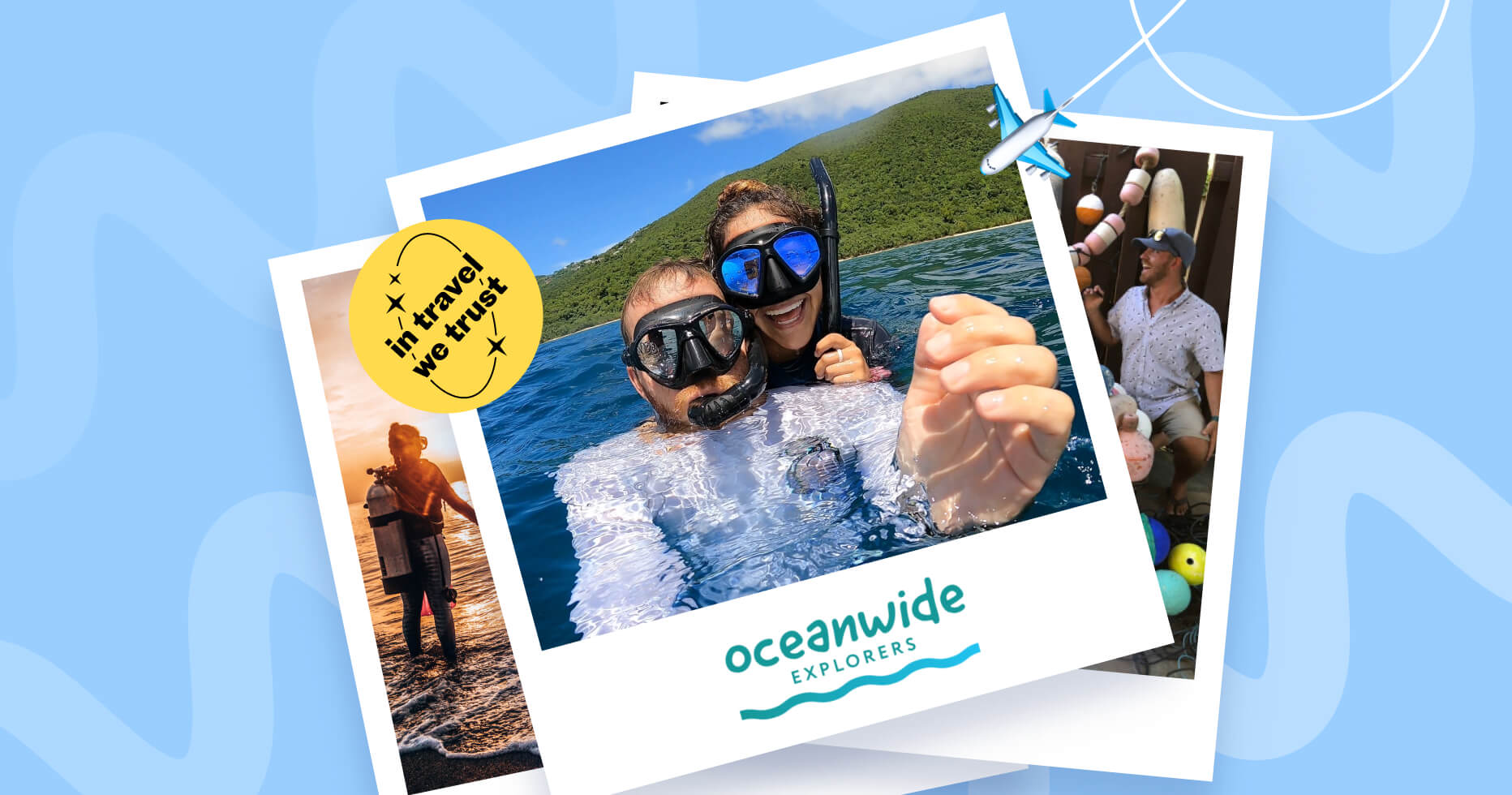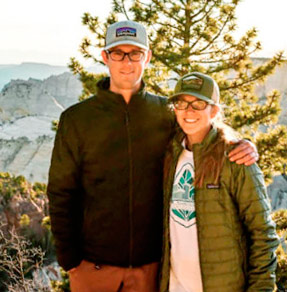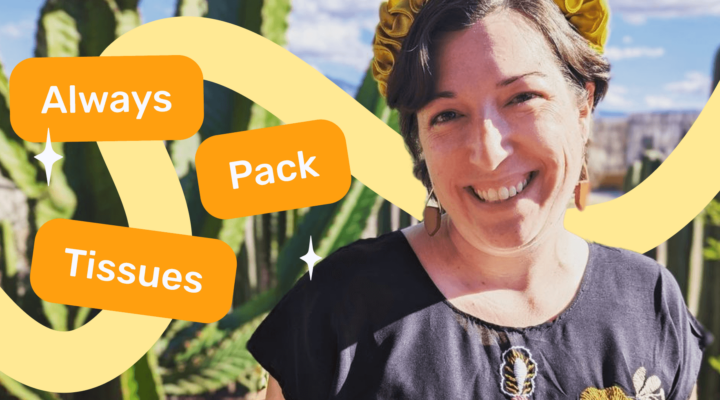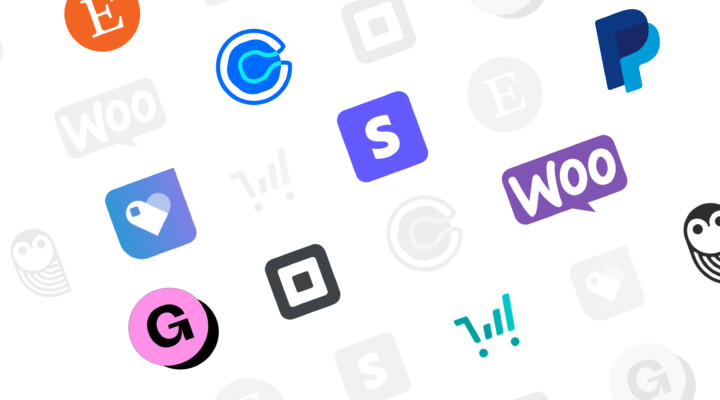How It All Began
The entire travel gig has been a relatively new to us. We were always avid travelers, but it never occurred to us to try and start a business related to this passion until we purchased a domain and webspace in 2019.
Andrew is originally from Grand Rapids, Michigan, while Laura is originally from Cali, Colombia. Currently, we are living in the US Virgin Islands (specifically St. Thomas) as we explore the Caribbean and beyond.
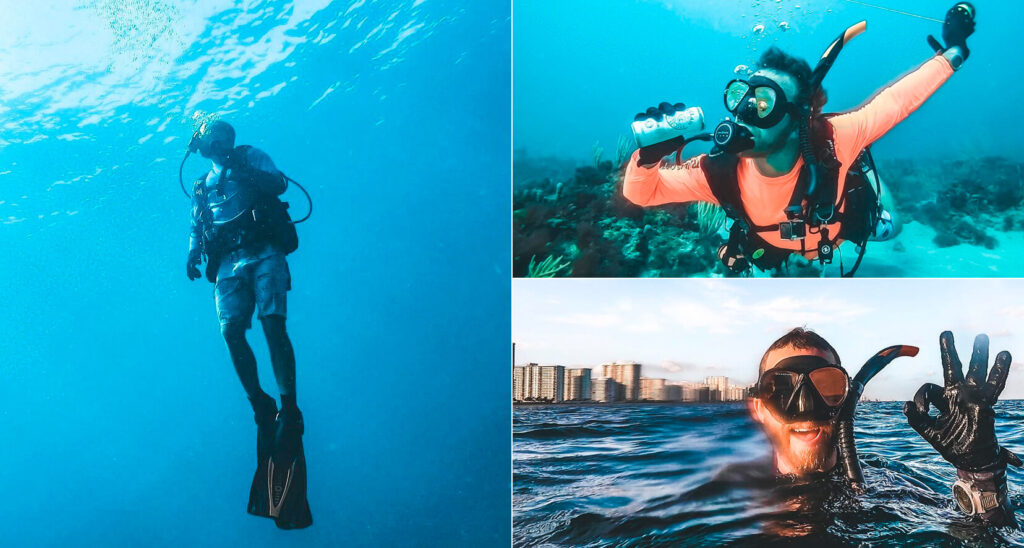
Andrew’s passions lie on the water, which is why he currently works as a professional scuba diver and boat captain for a local dive charter on St. Thomas.
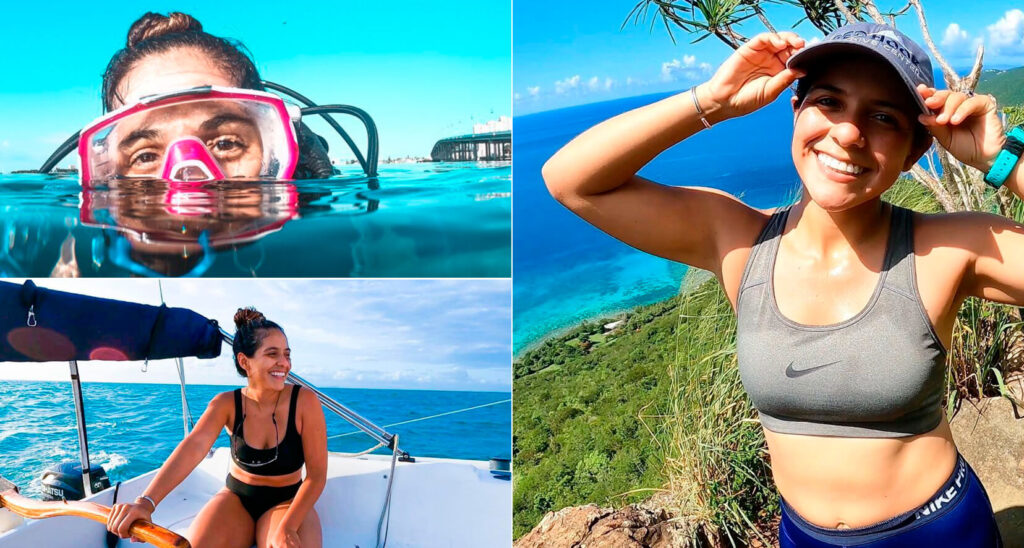
Laura grew up in Miami after leaving Colombia as a child. She attended the University of Florida, where she became a scuba instructor and received a Bachelor’s Degree in Marine Science. She’s currently continuing her education at the University of the Virgin Islands in St. Thomas, where she’s pursuing her Master’s Degree in Marine Science.
We met while we were both working in the Florida Keys in 2018. Andrew was teaching scuba and sailing programs for the Boy Scouts of America at Florida Sea Base. At the same time, Laura was interning for REEF, a nonprofit marine conservation organization based in Key Largo.
After finishing our time in the Keys, our adventures continued as Andrew moved north to Fort Lauderdale and Laura moved back home to Miami. Our weekends were spent scuba diving the wrecks and reefs of South Florida, exploring the Florida Everglades, and sailing Biscayne National Park. We finally tied the knot on August 7th, 2021, one day before moving to the US Virgin Islands on August 8th, 2021.
Andrew’s professional background has evolved over time, as he currently doesn’t use any of his degrees. Instead, after beginning to blog in 2019, Andrew works as a freelance writer, blogger, and boat captain. It’s been a whirlwind of a journey, to say the least!
Whether it was scuba diving, freediving, kayaking, or hiking, we were always out exploring new adventures on a regular basis. Andrew’s passion has always been finding hidden spots, trails nobody knows about, uncharted dive sites, and obscure paddle routes. It’s thrilling to explore seemingly new territory and off-the-beaten-path adventures in locations that crowds tend to avoid. We are inspired to share those amazing adventures with others who might be interested in discovering them.
About OceanWide Explorers
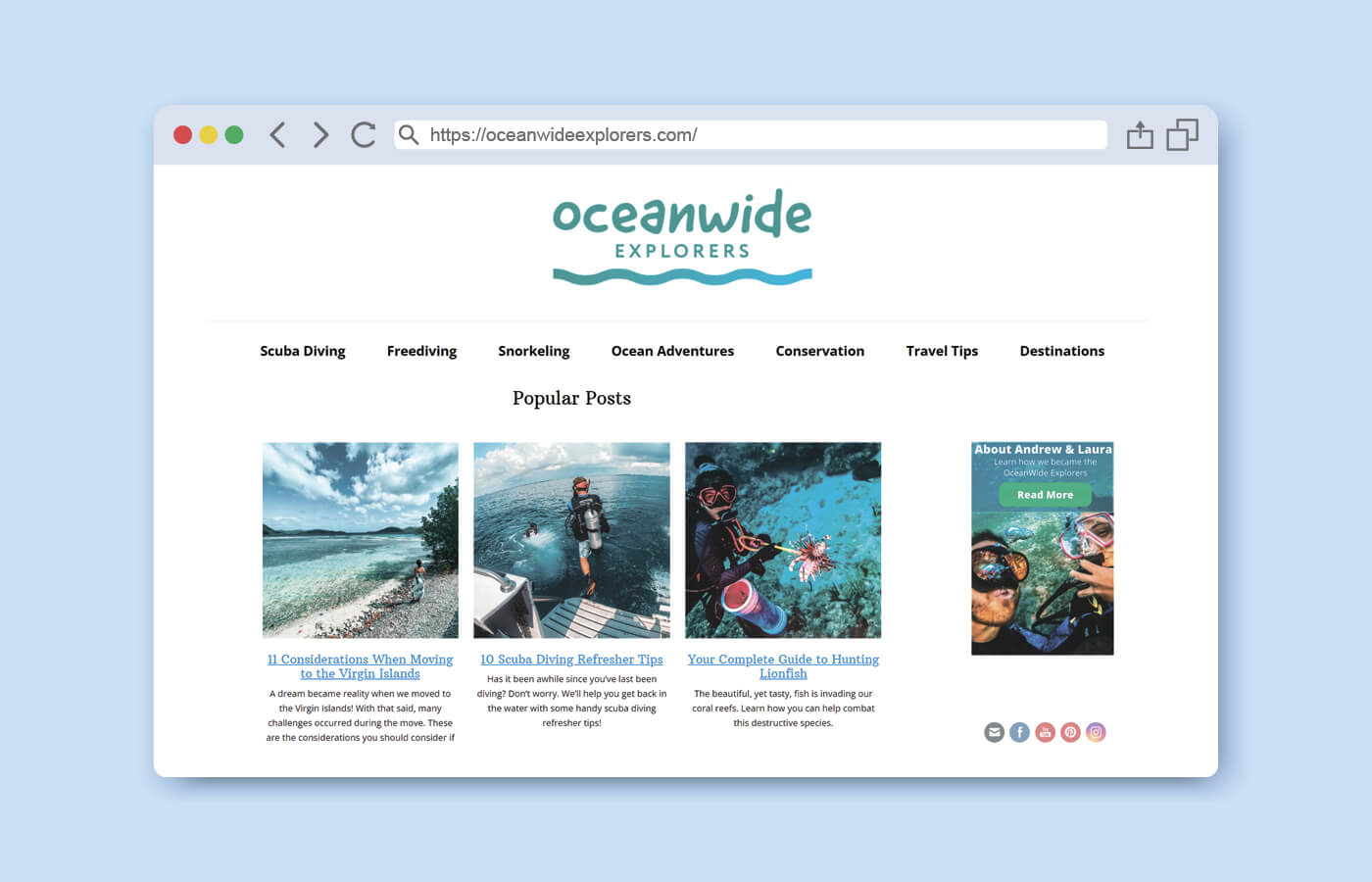
OceanWide Explorers is an adventure travel blog that inspires people to discover hidden adventures above and below the sea. We provide content on everything with an ocean view, including scuba diving, freediving, snorkeling, hiking, paddling, and sailing.
We were running two websites at one point, but decided to consolidate them into a single site in order to narrow our focus.
Travel Blogging Journey
We first purchased our domain name, theme design, and web hosting in 2019. We vividly remember sitting in the public library in Fort Lauderdale, debating whether we should do it or not. After all, it was a lot of money to pay upfront. Looking back, it was one of the best decisions we ever made.
One difficulty with starting out is taking that initial jump forward, especially if money is tight. If you see yourself blogging or running a website long-term, don’t go cheap up front. It’s an investment. Purchase reliable hosting, a highly functional theme, and a tailor-made domain name. It’s a lot of money, but it’ll be worth it in the long run.
Another difficulty is the initial learning curve. Neither of us had ever done web design, blog writing, or photography. However, since making our initial investment, we learned an immense amount to help design a functional and successful website. We had many aggravating moments where something just wasn’t working out.
We recommend simply stepping away to take a breather. Trust us, it’ll be waiting for you when you get back, but taking a break will allow you to tackle the problem with a clear head.
Traffic
Currently, most of our traffic is generated via organic searches on Google. Thus, our current focus is solely sustained growth with organic search traffic. Our website is still in the building phase, so our goal is to rank on Google for enough articles that we will attract many new readers to our website.
Once the audience comes to our website, we want to hook them and keep them coming back by providing useful content. At our current stage, we are solely paying attention to whether or not we are experiencing sustained growth in terms of users over long periods of time. Eventually, we want to see more direct traffic, which signifies dedicated readers.
If you are beginning your blogging journey, write articles that are extremely specific. As a new kid on the block, you’ll never compete with established websites for popular search terms within your niche. For example, “Things to Do in New York City” has been written thousands of times and there’s no chance you’ll compete with the likes of Fodor’s or Lonely Planet (not to mention the hundreds of other travel bloggers out there).
However, what you might be able to rank for is an article about a specific park or your experiences at a small museum in New York City (whatever your niche might be). There are plenty of people starving for specific information and you can easily get them to your website by providing it!
These principles played out on our website as well. For example, most of Andrew’s experience was in scuba diving; however, our new website could never rank for “scuba diving”. So, we narrowed our focus to specific dive sites in Fort Lauderdale and wrote about shipwrecks, beach dives, and coral reef dives around the city. After accumulating a small library, we wrote an article titled “10 Must-See Dive Sites in Fort Lauderdale”, which was internally linked to all of our very specific articles. Today, this article is one of the first results on Google when searching for “scuba diving in Fort Lauderdale”.
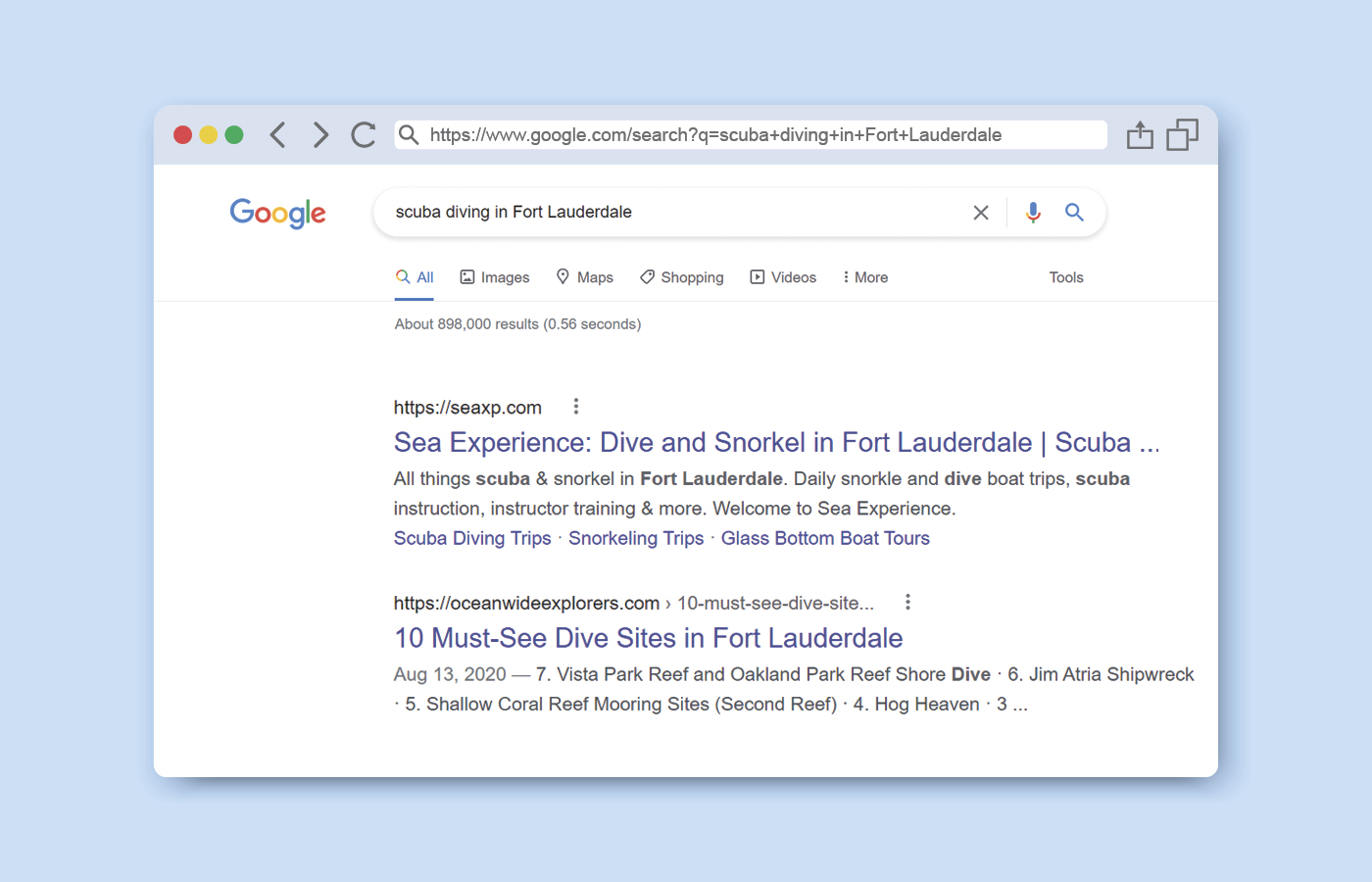
We’ve used social networks in the past, but have since shifted our focus to producing content we own first. Once we’ve established a vast library of interlinking articles that funnel readers to affiliate marketing links, we will once again spend time and energy driving traffic via social media.
We do get some traffic from backlinks on other websites that Andrew does freelance writing for. If a reader enjoys his stuff on a certain website, oftentimes, they’ll find their way to OceanWide Explorers for more. Backlinks are a fantastic source of traffic and one that Google seems to heavily weigh.
Content
We create the content ourselves. Andrew creates most of the content for our website. Laura helps with ideas, editing, videos and photos, and behind-the-scenes action.
We produce content that we are interested in. As an adventure and travel blog, most of our articles are related to outdoor activities in various destinations. It’s about us doing stuff. So, whatever we feel like doing is what we end up writing about.
If you don’t enjoy the content you’re producing, you’ll never be able to produce sustainably. If it’s not fun, then why do it? Travel blogging is about being able to live out your dreams and enjoy yourself while doing it!
When we first started creating content, we faced a few challenges:
- We were producing content that was too broad for a new website. For example, we were writing about topics that were going to be forever buried in Google searches and never see the light of day.
- In the same breath, we wrote articles that nobody was searching for. Just because you’re interested in a topic, doesn’t mean that other people are.
- Finally, we approached content production with a debilitating level of perfectionism. Obviously, it’s important to have high standards, but we recently heard this bit of wisdom: perfectionism is procrastination masquerading as quality control. It’s okay to make mistakes.
A successful content creator is persistent, willing to make mistakes, and approaches the entire process with a desire to learn. Most importantly, they understand that creating a successful website is a long, difficult process.
Build first your content and add affiliate links later. When you first start your content creation journey, you’ll be tempted to use affiliate links wherever possible. However, those links won’t do you any good and may even end up hurting you if placed unskillfully.
Provide quality content first, and then, once you have a steady flow of readers, go back and add affiliate links where appropriate. It won’t be long until you begin to see consistent results.
Monetization
Our primary source of monetization is affiliate marketing. Our website focuses on outdoor adventures, so it’s been a smooth implementation to discuss gear recommendations, guided tours, and transportation.
Additionally, we utilize contextual ads in most articles (although the revenue we receive from them is a small fraction of what we earn via affiliate links). Currently, our RPM is between $40 and $50.
One other major source of monetization that was a direct result of starting our website is freelance writing. We’ve had many paid opportunities open up to us by applying and sharing content from our blog as “clips”. As two people with no formal writing education and no prior published work, our blog was the only outlet we had to garner any experience.
Affiliate Marketing
One of the most difficult challenges is getting accepted to affiliate programs as you start your website. Many affiliates won’t accept you without adequate traffic. However, if you keep producing content, you’ll eventually get enough traction and start getting accepted into various affiliate programs to begin your monetization goals.
Currently, we are connected to plenty of travel affiliate programs:
- Travelpayouts – Booking, Hostelworld, Viator, Busbud, and others
- Avantlink – REI, Backcountry
- CJ Affiliates – VRBO
- ShareASale – House of Scuba
- Impact – Leisure Pro, Skyscanner
- Amazon
We also partner with a couple of company-specific affiliate programs, such as 4Ocean, Stream2Sea, and World Nomads.
We initially signed up for Travelpayouts to access the Discover Cars affiliate program, which allowed us to recommend a search engine for rental cars. Since then, we’ve expanded our affiliates to Booking.com, HostelWorld, Viator, Busbud, and more.
Of all the affiliate programs we are a part of, Travelpayouts is the most user-friendly. Many independent affiliates operate on their own systems and some can be wildly frustrating. One example is Booking.com, which had its own affiliate system that was almost impossible for us to log in to. Fortunately, they ended up on Travelpayouts, where the interface is FAR more user-friendly.
Travelpayouts makes everything easy every step of the way from building links to getting paid. Having all of our affiliates on one page with all the tracking information, link builders, and more makes for the best interface of any affiliate manager.
Join the Travelpayouts partnership platform
Join todaybrands
Through Travelpayouts, we mainly work with accommodation affiliate programs as well as tours and activities affiliate programs. We’ve also experimented with the Busbud affiliate program on articles we’ve written about getting from one place to another in Mexico. We were quite surprised when we started getting clicks and revenue from these articles. Destinations like Mexico, where travelers frequently travel via bus, are great for Busbud.
If your blog focuses on any sort of ocean-based activity, you can join a couple of specific programs:
- Stream2Sea is a coral-reef-safe sunscreen brand based in the United States. Their affiliate program, Wavemakers, is a place where content creators receive a code that allows customers to receive a 10% discount on all products. When customers use your code, you also receive a 10% commission. It’s a great way to offer incentives for your readers.
- 4Ocean is a company focused on cleaning plastic from the ocean via the sale of bracelets made from recycled ocean plastic.
If your blog focuses on any sort of ocean-based activity, both of those programs are great to be involved with and can boost your affiliate revenue while serving a great cause.
Tours and Activities Affiliate Programs
We like the Viator affiliate program because it gives us options to recommend experiences in many of the places we write about. For a long time, we were recommending tours without any affiliate links, but eventually, we realized that many of those tours were listed on Viator. Simply swapping the links out has yielded fantastic results.
Our focus is adventure travel, so outdoor tours listed on Viator, such as boating, scuba diving, and kayaking, just made sense to incorporate into our articles. Few other sites offer the variety, confidence, and quality that Viator does.
We are also affiliates with GetYourGuide, but we find that Viator has a far greater selection of experiences compared to other similar sites. In addition, it’s a reputable site that travelers feel confident booking on.
We incorporate affiliate links to tours on Viator via traditional listicle blog posts. For example, we have an article titled “4 Best Snorkel Spots in Fort Lauderdale”, where a few Viator tours bring snorkelers to those specific sites, for example – Public Guided Snorkel Tour of Fort Lauderdale Reefs. It works well!
So, the approach is simple: people search for a specific adventure and we provide information on where and how to get there (sometimes via Viator affiliate links).
Seasonality affects which types of affiliate marketing links do well and which don’t. For example, affiliate links to tours in tropical destinations tend to do very well during spring break and the winter months (like our articles about Fort Lauderdale).
We’ve combatted this by writing timeless articles that are travel-related, yet unaffected by seasonality. For example, one of our top articles that does well year-round is about GoPro Accessories for Scuba Diving. People are scuba diving all over the world at all times of the year. It’s not destination-specific, so variations in travelers are inconsequential.
How to Place Affiliate Links
Articles that we wrote early on were laced with random, nonsensical affiliate inks that no one in their right mind would have clicked on. Since then, we’ve become more creative and tactful when implementing affiliate links. For example, we begin by answering questions that readers might have. Within our answers are often solutions consisting of affiliate links.
It’s important to be genuine with your communication. Provide your audience with the information they’re seeking, but don’t necessarily try to sell them something. People are bombarded with enough advertisements that, if you begin to sound like one, they’ll instantly go elsewhere.
Along those same lines, answer a question they might be asking, such as “Where can I go snorkeling in Fort Lauderdale?” Provide that answer in a genuine manner and the clicks will come organically.
There’s a fine line between making the affiliate link look like an advertisement and subtly drawing the reader’s eye to it. We use a fair degree of white space with a button consisting of CTA words. Another strategy we use is to simply bold the words of an affiliate link. People tend to click on bolded words more than non-bolded words. An example of using both methods can be seen here:
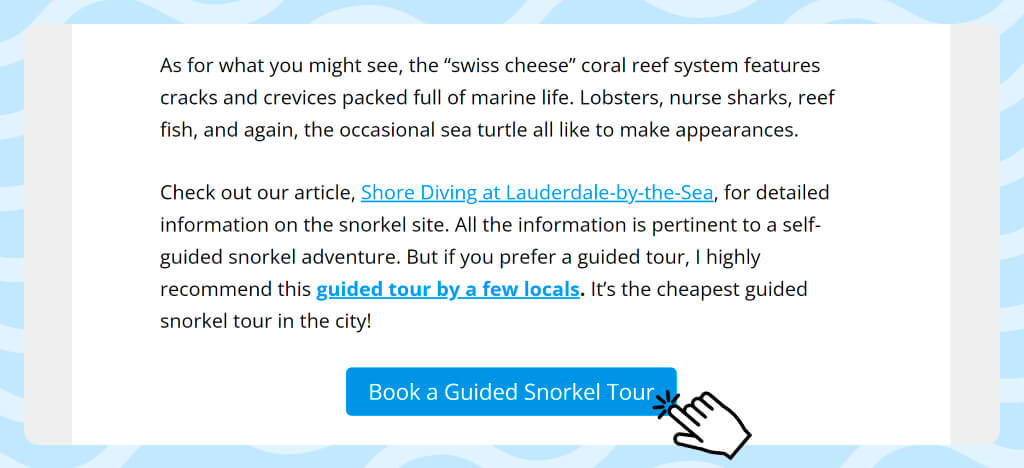
The best place to add affiliate links is in specific blog posts answering specific questions. The worst place to add them is on your home page or other anchor pages linking out to the rest of your website.
Again, you don’t want your website to be viewed as one big advertisement, as readers will be dissuaded from staying on your website if all you’re trying to do is get them to click on links. Provide the reader with useful information and strategically lace pertinent products or tours and the clicks will come organically.
The key to success as a blogger who earns money via affiliate marketing is understanding how people go about making purchases.
Just like any other marketing strategy, the sales process applies to affiliate marketing. You need to funnel readers to the point of purchase. Having a basic understanding of this concept will help guide your content creation.
How to Become a More Productive Blogger
Our main difficulty is finding the time and energy to produce relevant and sustainable content. As we mentioned earlier, we both have various pursuits as a boat captain and marine scientist, so sometimes producing content gets put on the back burner.
Additionally, our time off is spent doing things, whether that’s scuba diving, freediving, or sailing. We garner the content knowledge, yet end up delaying the production of the content on our website. We currently have a four-month backlog of content to create.
We’ve found it helpful to categorize our tasks at various times throughout the day. For example, if we have the entire day:
- Mornings will be spent downloading videos and photos, as we have a cup of coffee (a low-level cognitive task).
- Once our brains are alert and ready, we’ll spend our peak hours (from 10 AM to 2 PM) producing deeply creative work, such as writing or doing video narration.
- After the brain has slowed down, we’ll spend the rest of the workday building affiliate links, conducting research, or doing some other low-level cognitive task.
This will help us process much of our backlog of content in the most effective way possible.
We’ve faced one more difficulty in both the past and present: narrowing the focus. Finding a niche is incredibly important and aspects of our website may still be too broad. We love doing many different things in and around the ocean, so it’s hard to pack it all into a neat box.
Key Takeaways
- If you see yourself blogging or running a website long-term, don’t go cheap up front. Treat blogging as an investment and purchase reliable hosting, a highly functional theme, and a tailor-made domain name.
- If you are beginning your blogging journey, write articles that are extremely specific.
- Travel blogging is about being able to live out your dreams and enjoying yourself while doing it. If you don’t enjoy the content you’re producing, you’ll never be able to produce sustainably.
- A successful content creator is persistent, willing to make mistakes, and approaches the entire process with a desire to learn.
- If some brand does not allow you to join their affiliate program without adequate traffic, keep producing content and you’ll eventually get enough traction that you’ll start getting accepted into various affiliate programs to begin your monetization goals.
- Allowing you to have all of your affiliate programs on one page, with all the tracking information, link builders, and more, makes Travelpayouts the best interface for any affiliate marketer.
- Seasonality affects what types of affiliate marketing links do well and which don’t. You can combat this by writing timeless articles that are travel-related, yet unaffected by seasonality.
- It’s important that you are genuine with your communication. Provide your audience with the information they’re seeking, but don’t necessarily try to sell them something.
- The key to success as a travel blogger who earns money via affiliate marketing is understanding how people go about making purchases. You need to funnel readers to the point of purchase. Having a basic understanding of this concept will help guide your content creation.
- Categorize your tasks at various times throughout the day. This can help you process your backlog in the most effective way possible.
—
Want to share your story? Travelpayouts welcomes all bloggers with any travel-related experience. Write to us at an@travelpayouts.com with the following subject: “Story for the Travelpayouts Blog”.

